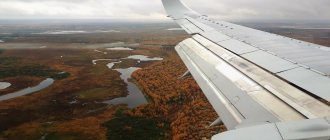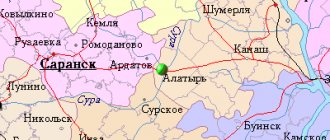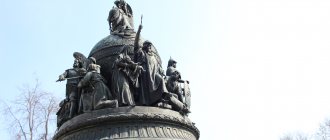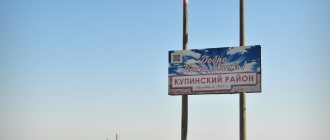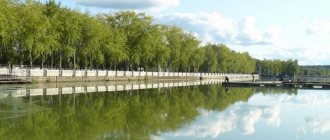3K 4 min.
Verkhnyaya Pyshma is a satellite city of Yekaterinburg, which in recent years has earned the right to be called a completely independent municipal entity. The head office of the country's largest copper processing holding is based here. The key activity of the municipality is industry; 21 enterprises are located here. In addition, the city is famous for one of the best museums of military and automotive equipment in Russia.
Copper ore and lizard are traditional symbols of the Urals
Photo: Vladislav Lonshakov, Kommersant
Story
The first settlement on the site where the city of Verkhnyaya Pyshma is now located appeared around the 30s of the 18th century. Among the first inhabitants of Pyshma there were many Old Believers. They were engaged in coachmanship and mining on the “great Verkhoturye road.” In 1854, the Pyshminsko-Klyuchevskaya copper mine was opened here, and two years later a small copper smelter grew up next to it, which became a city-forming enterprise. However, by the beginning of the 20th century, ore reserves were depleted. The city’s “second wind” began in 1929 with the start of construction of the Pyshminsky copper-electrolyte plant. In 1958, the Pyshminsky pilot plant was launched. In 1946, the workers' village of Pyshma was transformed into the city of Verkhnyaya Pyshma. In 1997, based on the results of a referendum, the municipal formation “Verkhnyaya Pyshma” was created.
Development of the territory
The founding date of the settlement is considered to be 1701. According to archival documents, the first inhabitants of the village of Pyshma were coachmen and ore miners. Among them were many Old Believers who fled persecution from the central provinces. In this village, travelers departing along the Great Verkhoturskaya Road from Yekaterinburg to Verkhoturye, through Nevyansk and Nizhny Tagil, made their first stop. Here they fed or changed horses before a long journey. For travelers coming from the north, this was the last stop before the civilized world.
The impetus for the development of the region was a Senate decree of 1812, allowing all Russian subjects to search for and develop silver and gold mines with the payment of taxes to the treasury. Already in 1814, the first gold deposits were discovered in the upper reaches of the Pyshma River.
Geography
Verkhnyaya Pyshma is a satellite city of Yekaterinburg. It is located 1 km north of the metropolis. In the north it borders with the Rezhevsky district, in the east - with Berezovsky, in the south - with Yekaterinburg, in the west - with the Nevyansky district. The urban district includes 24 settlements, including 20 towns, two villages and two hamlets. The total area of the urban district is 105.2 thousand hectares. The natural resources of the urban district include a large number of lakes and rivers, deposits of granite, peat, brick clay and sapropel.
Bottom line
Verkhnyaya Pyshma can already be called a city with developed infrastructure. The city has everything you need for life - new houses, places for leisure, a park, educational and sports institutions for children. They are trying to solve the environmental problem - there are not many industrial cities without environmental problems.
The city has a strategy that apparently works - because all this is reflected in population growth, despite the fact that it is only 14 kilometers from here to the center of Yekaterinburg, and people could simply leave en masse, as happens in other satellite cities.
Power
The city has a two-headed government system. The city and the Duma are headed by Alexander Romanov. The administration of Verkhnyaya Pyshma has been headed by Ivan Solomin since August 2021. According to the structure of the administration, five people work in the positions of deputy heads of administration. The first deputy oversees investment policy and development of the territory. The remaining deputies deal with social issues, housing and communal services, transport and communications, economics and general issues. The city district Duma consists of 20 deputies who are elected for five years. The last time Duma elections were held was in 2013.
Natural heritage
The topography of Verkhnyaya Pyshma consists of elongated mountain peaks, stream and river beds, deep depressions, and swampy lowlands. The largest difference in height is about two hundred meters. The most prominent mountain peaks are Tolstik (458 meters) and Shitovskoy Tolstik (450 meters).
Flora and fauna are very rich and diverse. Unique forests are represented by spruce, birch, pine, and larch trees. More than twenty species of birds live in the forests: thrushes, cuckoos, finches, wood grouse, hazel grouse. The largest representatives of the animal world are foxes, wild boars, wolves, and moose.
It is not for nothing that the surroundings of Verkhnyaya Pyshma are called the lake region, because in addition to large bodies of water there are countless small lakes, including Shchuchye, Maloe Karasye, Vashty, Bolshoye Karasye, Yelnichnoe, Klyuchi. The lakes are inhabited - pike, bream, crucian carp and perch are found here. The richest and most beautiful region.
On the territory of the region there are archaeological sites of the Neolithic era; rock paintings were discovered, which historians date back to three millennia BC.
In 2001, an interesting discovery was made in the Verkhnepyshminsky district - ancient stone structures, the so-called dolmens, were discovered. There are similar archaeological sites in the Altai Territory, the Caucasus, and Karelia. The origin and purpose of dolmens is still unknown and causes heated debate among scientists.
Lake Isetskoe
Lake Isetskoye is located seven kilometers west of the city and is a typical natural reservoir of the Trans-Urals. On the shore of the lake is the city of Sredneuralsk. The largest river flowing into Lake Iset is the Shitovskaya source; the Iset River originates in the lake. There is a boat station on the lake and a beach. Lake Isetskoe has the status of a landscape monument of regional significance; it is one of the largest in the region.
The remains of camps of primitive people were discovered on the western shore. Coniferous forests with an admixture of Siberian cedar in the vicinity of the lake are a botanical natural monument.
Shitovskoe swamp
The Shitovskoe swamp is located west of the village of Murzinka along one of the shores of Lake Shitovskoe. The swamp is a regulator of the water exchange of the Shitovskaya source river and is in three stages of development. On the southern shore of Lake Shitovskoye, images made by ancient people who lived in these parts were discovered. The Shitovskoe swamp has the status of a landscape natural monument.
Rocks Devil's settlement
The rocks are located five kilometers north of Iset station and are granite outcrops with a complex of rock flora. The Devil's Hillfort rocks have a peak of 347 meters above sea level and a twenty-meter stone ridge, which consists of individual towers. The towers lie on a pedestal of granite slabs. The northern wall of the rocks is steep, and the southern one is more gentle, it goes down in steps and ends in the valley of the Semipalatinka River. The Semipalatinka is a small swampy reservoir, one of the tributaries of the Iset. Near the Iset station there is a village from which a road goes to the “fortification”. The Devil's Settlement rocks are a geomorphological, botanical and archaeological natural monument.
On the tops of the remains, fragments of Iron Age pottery and the remains of small bones were found. Pottery dating approximately from the 10th to 13th centuries AD was discovered in the crevices. e.
Petrogrom (Peter Gronsky Rocks)
The rocks are located two kilometers west of the village of Iset. They are granite outcrops with weathering patterns and the presence of rock flora. The rock mass extends from west to east. At the Iset station there is a village from which a walking trail (length - three kilometers) is laid to the rocks. At the top of the massif, a large number of bones, slags, and the foundations of smelting furnaces were discovered. The foundations of the forges date back to approximately the 7th century AD; archaeologists attributed the upper cultural layer to the 6th–9th centuries AD. The Peter Gronsky Rocks are a geomorphological, botanical and archaeological natural monument.
Lake Baltym
The lake is located on the territory of the Verkhnepyshminskoye and Baltym forestries, four kilometers north of the city, not far from the village of Baltym. The uniqueness of the lake is manifested in its shape - a perfect oval. On the shores of Lake Baltym there are tourist centers that have good access roads. The lake is a hydrological natural monument.
Budget
Verkhnyaya Pyshma's revenues for 2021 amounted to 3.5 billion rubles, expenses - 3 billion rubles. According to the latest data for 2021, revenues will amount to 3.2 billion rubles, expenses - 3.3 billion rubles. In September 2017, the government of the Sverdlovsk region approved the program for the comprehensive development of Verkhnyaya Pyshma for 2017–2022. It is planned to allocate 48 billion rubles for its implementation, of which 26 billion will come from extra-budgetary sources (mainly due to investments from the city-forming enterprise).
Industry The leading link in the city's economy is industry, represented by 21 large and medium-sized enterprises. The main activity - copper production - is concentrated in the work of UGMK-Holding LLC. It is the largest producer of copper, zinc, coal and precious metals in the country. It unites more than 40 industrial enterprises. The city-forming enterprise, Uralelectromed JSC, carries out a full production cycle. Ural Locomotives LLC (affiliated with the Sinara group) specializes in the production of railway locomotives. OJSC Uralredmet specializes in the production of rare and rare-earth metals. JSC Yekaterinburg Non-Ferrous Metals Processing Plant, part of the group, specializes in the production of technical products from precious metals. In addition, in Verkhnyaya Pyshma, UMMC launched the production of cow and goat milk, cheeses and the cultivation of open ground vegetables. UGMK-Agro LLC specializes in this.
Ecology
In 2021, the cities with the most polluted air in the Sverdlovsk region included Yekaterinburg, Verkhnyaya Pyshma, Pervouralsk, Kamensk-Uralsky and Krasnoturinsk.
Local residents give 3 points to ecology on Domofond. They write here that sometimes it smells like the Sredneuralsk poultry factory - this enterprise, built in April 1973, became the first factory in the Sverdlovsk region for the production of poultry meat.
Due to air emissions in 2021, the asphalt plant in Verkhnyaya Pyshma was temporarily closed.
In 2021, residents of Verkhnyaya Pyshma and Sredneuralsk complained about the “black sky” to local public pages. There are also disputes in the comments with the statement about the stench in certain places.
In 2021, the Ural Mining and Metallurgical Company entered into an agreement with MKB to receive financing for environmental initiatives. The company claims that its operations have reduced emissions by 25% over the past 10 years.
Population
As of January 2021, the population in the urban district was 84.1 thousand people. More than 70 thousand people live in the city. Interestingly, industrial development has significantly increased the population. According to the 1939 census, almost 13 thousand people lived in the city, and in 1946 - 47.8 thousand people. The unemployment rate at the end of 2021 was 1%. About 500 people were declared unemployed. The average salary, as of March 2021, is over 31 thousand rubles.
Links[edit]
Notes[edit]
- ^ abcd State Committee of the Russian Federation on Statistics. Committee of the Russian Federation for Standardization, Metrology and Certification. No. OK 019-95 January 1, 1997 “All-Russian classifier of objects of administrative-territorial division. Code 65 420”, ed. changes No. 278 / 2015 of January 1, 2021. (Goskomstat of the Russian Federation. Committee of the Russian Federation for Standardization, Metrology and Certification. No. OK 019-95 January 1, 1997. Russian classification of administrative divisions) (OKATO).
Code 65 420 , as amended by Amendment No. 278/2015 of 01/01/2016). - ^ ab Encyclopedia of Russian Cities
. Moscow: Great Russian Encyclopedia. 2003. p. 68. ISBN 5-7107-7399-9. - ^ a b Federal State Statistics Service (2011). “All-Russian Population Census 2010. Volume 1" [All-Russian Population Census 2010, vol. 1]. All-Russian Population Census 2010 [All-Russian Population Census 2010]
. Federal State Statistics Service. - "26. The size of the permanent population of the Russian Federation by municipalities as of January 1, 2021". Federal State Statistics Service. Retrieved January 23, 2021.
- ^ abcd Law No. 85-OZ
- "On the Calculation of Time". Official Internet portal of legal information
. June 3, 2011. Retrieved January 19, 2021. - Post office. Information and computing center of OASU RPO. ( Post office
).
Search for postal service objects ( postal Search for objects
) (in Russian) - ↑
Federal State Statistics Service of Russia (May 21, 2004).
“The population of Russia, the constituent entities of the Russian Federation as part of federal districts, urban settlements, settlements, settlements is 3 thousand or more people” [Population of Russia, its federal districts, federal districts, districts Urban settlements, rural settlements - administrative centers and rural settlements with a population of over 3,000] (XLS). All-Russian Population Census 2002
. - “All-Union Population Census of 1989. The current population of union and autonomous republics, autonomous regions and districts, territories, negative phenomena, urban settlements and rural district centers” [All-Union Population Census of 1989: current population of union and autonomous republics, Autonomous regions and districts , territories, regions, districts, towns and villages performing the functions of district administrative centers. All-Union Population Census of 1989 [All-Union Population Census of 1989]
.
Institute of Demography of the National Research University: Higher School of Economics [Institute of Demography of the National Research University: Higher School of Economics]. 1989 - via Demoscope Weekly
. - Law No. 30-OZ
- "International and intermunicipal cooperation". movp.ru.
_ Upper Pyshma . Retrieved February 6, 2021.
Tourism
The main point of attraction for tourists in Verkhnyaya Pyshma is the UMMC Museum of Military Equipment, which opened in 2005. In 2010, the Museum was visited by 53 thousand people, in 2021 - 214 thousand people. This is one of the world's largest museums of the history of military and automotive technology. The complex includes two exhibition centers and an open exhibition area. The collection includes more than 5.7 thousand exhibits, including 400 samples of military equipment and more than 250 cars, motorcycles, bicycles and other vehicles. In 2011, the Museum of Military Equipment received the status of a public branch of the Central Museum of the Armed Forces of the Russian Federation. The Museum of Automotive Technology is currently closed due to moving to a new building. One of the favorite recreational areas of the townspeople is the UMMC park. Its area is more than 46 thousand square meters. m. The territory is divided into several recreation areas.
Scheme of attractions in Verkhnyaya Pyshma
1 — museum of military equipment “Military Glory of the Urals”; 2 - a monument to the Ural miners - the discoverers of the copper deposit; 3 - monument to victims of political repression; 4 — UMMC park with sundial; 5 - monument to V. E. Grum-Grzhimailo; 6 — Palace of Culture of Metallurgists; 7 - square with sculptures Bear and Elk; 8 - Verkhnepyshminsky Historical Museum; 9 - Copper mosque named after Imam Ismail Al Bukhari; 10 - Church of the Assumption of the Blessed Virgin Mary.
Urban environment
Verkhnyaya Pyshma has become one of 47 municipalities of the Sverdlovsk region, on the territory of which a priority project to create a comfortable urban environment will be implemented. The largest project - improvement of the boulevard on Uspensky Prospekt - could cost the municipality 200 million rubles. A preliminary design for the next stage of improvement of the city park is currently being prepared. Options for an integrated approach to improvement in the village of Kedrovoye and other settlements are also being considered.
